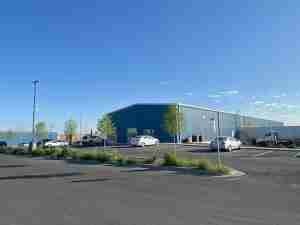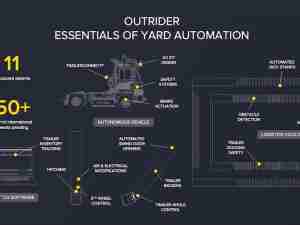Daimler AG’s sprawling truck division sketched out plans to turn its unrivaled global scale into better financial results ahead of its spinoff from Mercedes-Benz luxury cars later this year.
The division showcased its strategy for electrification, self-driving technology and more run-of-the-mill operating improvements during a virtual event Thursday, setting a target to reach double-digit operating margin by 2025. Optimism that Daimler Truck’s split from Mercedes could help close a profitability gap with Volvo AB and Paccar Inc. sent shares up as much as 3.2%.
“Being the largest truck producer in the world, Daimler Truck clearly has the potential to perform on par with the most profitable truck manufacturers,” said Roman Mathyssek, a consultant at Arthur D. Little. “The carve-out of Daimler Truck should lead to more flexibility, speed and more direct accountability to financial markets.”
Daimler boasts a truly global footprint that’s unique among commercial-vehicle manufacturers. While Volvo just trimmed its presence in Asia by selling its UD Trucks business in Japan, Traton SE, the subsidiary of Volkswagen AG, plans to enter the fray by finishing its takeover of U.S. truckmaker Navistar International Corp. next quarter. Electric-vehicle specialists including Tesla Inc. and Nikola Corp. are meanwhile plotting inroads amid the global crackdown on transport emissions.
Strategy Shift
Initial signs of strategy shifts at Daimler Truck emerged months before this week’s event.
Agreements to cooperate with Volvo on fuel cells, Cummins Inc. on medium-duty engines and Waymo LLC on autonomous driving signaled the manufacturer may be more pragmatic about sharing development expenses than in the past.
On Thursday, the company announced it will expand a partnership with Chinese battery maker Contemporary Amperex Technology Co. and and work with Royal Dutch Shell Plc on hydrogen-refueling infrastructure.
Daimler’s Truck’s planned appointment of former Siemens AG Chief Executive Officer Joe Kaeser as supervisory board chairman also suggests it could be more open to reviewing its global assets. During his tenure atop Siemens, Kaeser decentralized the German industrial conglomerate through a flurry of deals that unlocked value for shareholders.
Apart from Mercedes-Benz trucks, Daimler’s trucks and buses division comprises Fuso in Japan, BharatBenz in India, Setra in Germany; and Freightliner, Thomas Built and Western Star in North America.
Margin Opportunity
Daimler Truck has relied heavily on profits from Freightliner, as North America tends to generate much of the industry’s earnings. Prospects for other businesses are more difficult to predict—global demand for buses, for example, has been doomed by the pandemic and it’s unclear when sales might bounce back.
Global sales for the division grew 4% in the first quarter to 101,322 vehicles. The unit has targeted an adjusted return on sales of 6% to 7% this year. It generated a 6% margin in the first quarter, up from 2.8% a year ago, on 8.67 billion euros ($10.5 billion) of revenue.
There’s “significant scope to improve margins,” Jefferies Ltd. analyst Himanshu Agarwal wrote in a report this month. Market demand is forecast to remain strong in coming years, and Daimler Truck’s restructuring in Europe and Latin America should help reduce costs, he said.
Daimler Truck’s double-digit margin goal is based on a supportive market environment. The company intends to bolster earnings through a stronger focus on more lucrative heavy-duty vehicles as well as services.
In a presentation, the company laid out plans to reduce fixed costs, capital expenditures and research-and-development spending by 15% in 2025 compared to 2019. That includes a 300 million-euro personnel-cost reduction by 2022 at the Mercedes-Benz trucks unit.
Historic Split
The truck unit spinoff will be historic because Daimler’s trucks trace their roots to the inventors of the automobile.
Carl Benz—who in 1886 registered a patent for his gas-powered vehicle—and Gottlieb Daimler each pursued development of both passenger cars and commercial vehicles.
Commercial vehicles always were the smaller of Daimler’s two business but gradually expanded into a second industrial pillar. Deutsche Bank AG helped broker the merger of Daimler-Benz AG in 1926.







